Advertising Types in eReading/Tablet Context – Functional & Commercially-Orientated Content
The product review pages of newspapers and magazines, such as outlooks on fashion, are a clear sign of how direct e-commerce may be embedded into independent editorial content. In terms of tablets and some eReading devices, the advanced technological characteristics enable that it is possible to seamlessly move away from non-commercial, unbiased editorial content to a commercial e-commerce environment. However, this kind of novel phenomenon is not to be confused with the concept of ‘advertorials‘ where advertisers consciously aim at creating content that resembles editorial content and that consumers might, by mistake, regard as being non-commercial content which, in turn, might lead to a much more positive attitude towards the advertised product(s). Indeed, advertorials are created by advertisers and commercial content is, by contrast, part of editorial content with direct e-commerce linkages. From readers’ point of view the straight linkage to commercial platforms is reasonable since direct linkages save consumers time and effort in purchasing. In particular, layer-based e-shops, that open on top of a page, bring additional value to consumers as they often offer richer information about products and services. Hence, readers do not need to close an open newspaper or magazine application and open a web browser but, instead, they get the information immediately.
Despite this distinct additional value, it is central to consider ethical issues. Especially, it is noteworthy to consider the point when the unbiased, editorial content turns into commercial announcements. This kind of content does not serve the reader but, rather, generates sales through editorial content. As it is, commercial content in eReading and tablet media resembles to a great extent the concept of affiliate marketing where publishing parties direct consumers to merchants’ environment (that is, e-commerce platforms) and receive commissions on every actualized act, such as site visits or realized sales. In an online context, these affiliate publishers are often individual actors, such as bloggers, whose actions are not under such harsh scrutiny; their operations are not regulated in a similar manner in terms of commercial and editorial content.
In terms of U.S. magazines and newspapers, both editorial content and e-commerce have been utilized in a multifaceted way when it comes to consumer products. Let’s go through some benchmark examples:
For instance, The Daily newspaper (Figure 25) has its own product display page, ‘Slice of Life’, where diverse consumer products are presented shortly. Each product can be purchased via an e-shop layer that opens on top the page.
Secondly, women’s fashion magazine, Elle (Figure 26), presents cosmetics by directing readers to an e-shop. A similar pop-up layer technique is utilized in Elle.
Thirdly, Wired magazine (Figure 27) presents consumer products in a very sales-oriented manner. Differing from various other newspapers and magazines, Wired announces in its product review page (a small vertical text on the bottom right) that “WIRED receives a commission on sales.” In this sense, we are clearly dealing with an online affiliate site where editorial content does not only serve the reader but also the magazine itself; it is part of the e-magazine’s revenue model.
Fourth, The Oprah magazine (Figure 28) enables web-based shopping through a magazine-like layout. In this magazine, a product-specific pop-up window opens on top of the page enabling consumers to access products’ own e-shops.
In addition, The Oprah magazine (Figure 29) displays women’s fashion stylishly through images. Herein, it is not possible to purchase products directly but, rather, via “Shop Guide” navigation bar. Also The Oprah magazine utilizes pop-up layer technique by opening the e-shop layers on top of pages.
The Oprah magazine (Figure 30) has greatly utilized e-commercialism when it comes to book reviews. In terms of actual purchasing, the magazine offers consumers with the option of choosing whether they want to order a physical or an electronic product via Amazon.com or Barnesandnobles.com. Besides having enabled e-commerce, the magazine offers consumers with the possibility of reading an example page of a book, sending a review via e-mail to a friend, and saving the product for a later, eased access. These kinds of additional services are widely used in more traditional e-shops and it is interesting to see the extent to which online magazines and newspapers adopt e-shop-related characteristics in their own applications.
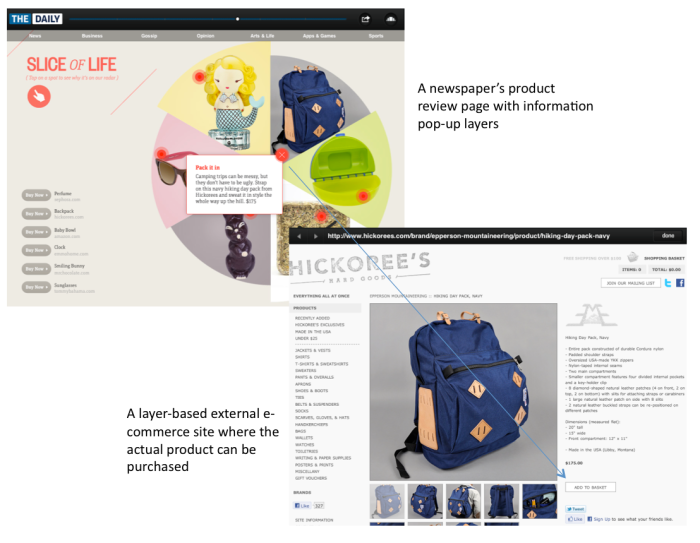
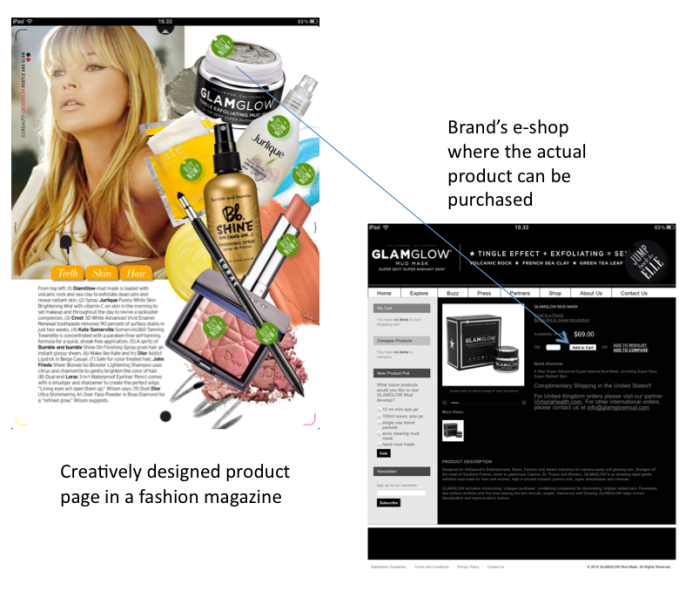
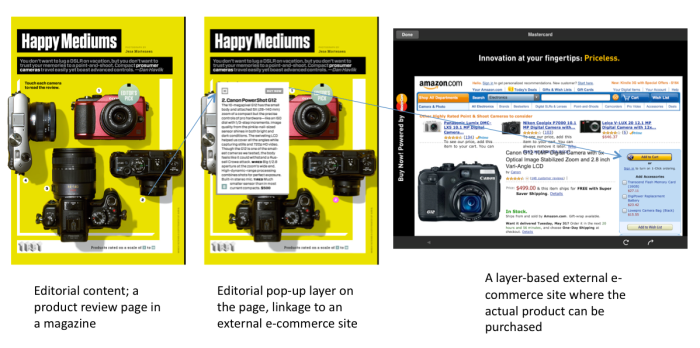
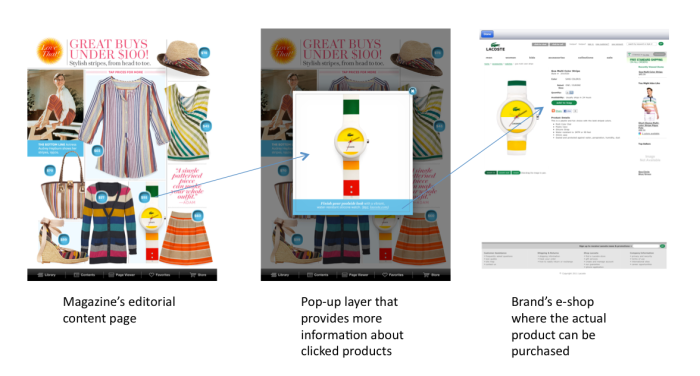
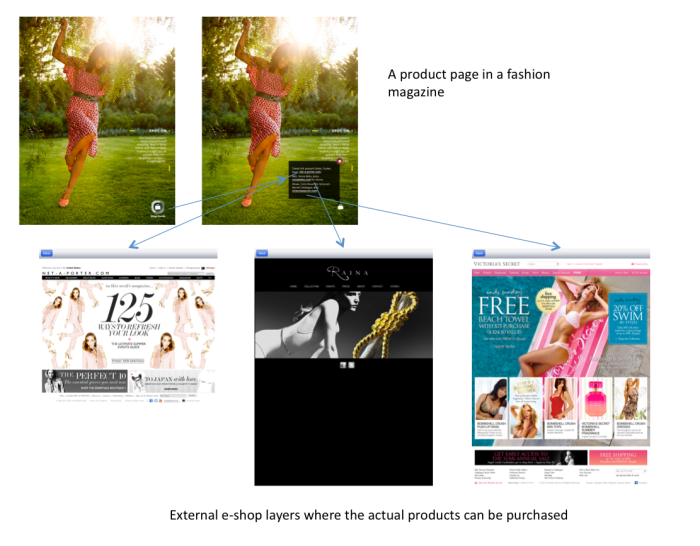
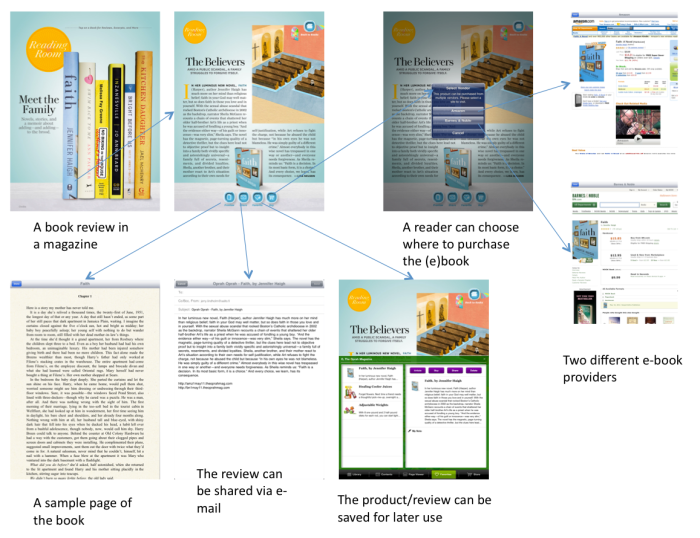
Leave a comment